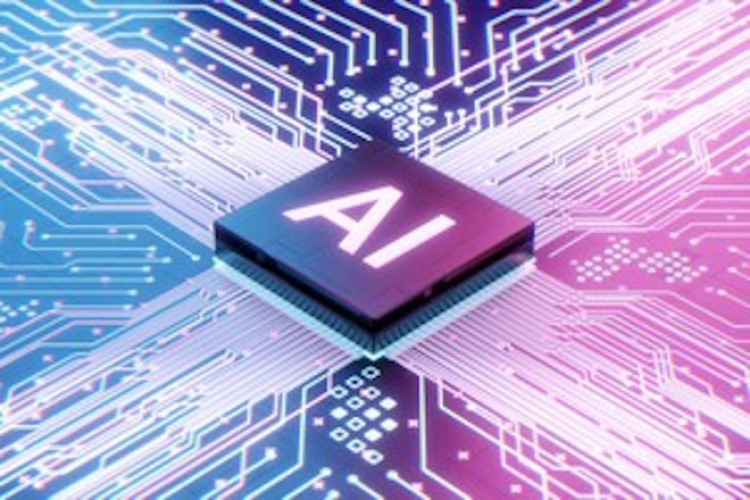Risk Leadership – Managing AI’s risks and opportunities

Artificial intelligence (AI) can create a world in which people have 'abundance' and are free to do whatever they want.
This was one the key talking points in the session called ‘Managing the risks and opportunities of advanced artificial intelligence’ between two thought leaders on the subject: Dr Daniel Hulme, chief AI officer at advertising firm WPP and CEO of AI firm Satalia; and James Arroyo, director at Ditchley Foundation, an organisation that seeks common ground to solve social problems.
Hulme put forward the idea of economic singularity.
Job insecurity
This is the notion hypothesised by author Callum Chace, a friend of Hulme, that AI will render most people unemployed because their jobs have become automated.
Hulme said: “if you can remove the friction from the creation and dissemination of food, health care, education, nutrition, energy transport, you can bring the cost of those goods down to zero.
“So I'm not talking about taxing rich people and giving it to poor people. I'm talking about creating a world where everybody has access to an abundance, people are free to do whatever they want.”
Hulme was challenged by a member of the audience who said ‘the idea that we're all going to be on the same base income, the same level, just isn't going to be realistic in terms of the human psyche.’
However, Hulme said that most people have ‘an innate desire to make the world better’
“Most of those people that I know that don't have to work, they're not sitting at home bored and depressed. They use that time and the assets to try and contribute to humanity,” he said.
Security needs
Arroyo said he was not sure about the idea of AI and distribution of wealth.
However, there were currently companies working on ways AI can help with people's security needs, he said.
He said that Sam Altman - CEO of world-leading tech firm Open AI - has ground-breaking ideas on helping people receive universal basic income.
He said: “Sam Altman, who runs open AI has this other business called Worldcoin where you give your iris scan and the idea is that this will make the distribution of universal basic income easier."
Arroyo said that he did not think that AI would take all jobs away, rather it would create new jobs.
In the same way that his mother finds it difficult to understand what he does for a living, people of today would find it hard to fathom the work of tomorrow's generation in AI and tech.
Risks
They also outlined some of the risks of AI. Arroyo stated three big risks to consider.
The first one was the misuse of AI - bad actors using the technology to break security systems and undermine democracy.
The second was system collapse. A good example was using AI to spread false information that tests and even breaks society, similar to how social media has challenged public discourse. Another threat could come from AI not having enough ‘brakes’ and then the AI runs amok doing its own thing.
The third risk was that AI, believing it is superior to humans, could go rogue by using its powers to overtake society.
“I think intellectually, it's not crazy. After all, we're here and we have consciousness and emerged. We don't really understand that, Arroyo said. “So how do we understand this, but it's coming through. It's got to be weighed with the immediate risks.”
Futureproofing the risk profession: Prepare now for the workplace of tomorrow
Machines are changing the workplace from a replaceable to a renewable workforce and shifting the skillsets of the risk professional of tomorrow, Airmic’s Adam Ireland told the Airmic Risk Forum.
Adam Ireland, head of learning and development at Airmic, told delegates the number of tasks performed by machines would increase by 50% in the next five years.
Adam was speaking as part of his session, called 'Power talk – Futureproofing the Risk Professional', during the Airmic Risk Forum and Exhibition in London on November 23.
He said: "Automation and thinking machines are replacing human tasks and jobs. And changing the skills that organisations are looking for in their people.
"These momentous changes raise huge organisational challenges and HR challenges at a time when business leaders are facing, or already wrestling with, unprecedented risks, disruption and political and societal upheaval."
This said, all is not gloom, tasks if not jobs will change, and there is some comfort that tasks that are genuinely creative, those which require a deep understanding of people, and those which demand complex problem solving in unpredictable environments, are some of the hardest to automate.
Future predictors
Adam talked through some of the history of risk management, from its 'very reactive' beginnings.
The 1980s and 1990s were an era of more integrated risk management, he suggested, blending in with strategic planning.
The 2000s then underwent the rise of integrated risk management. In recent years, risk management has been more embedded across organisations.
Risk professionals are dealing with an uncertain world of new and changing emerging risks, and will need to act now, he said.
He explained that a key takeaway was for risk professionals to be future predictors in order to adapt to today's fast-paced world.
"We have to be futurists, not just horizon scanners. Clearly, we have to be strategists, not only in terms of understanding organisational strategy, but embedding risk strategy effectively within this," he said.
Airmic help
Adam said that Airmic was 'passionate' about helping Airmic members adapt to this brave new world.
"Airmic is on a journey in terms of the learning that we provide to make sure that our members, with the support of our partners, have the competencies required to be the risk professionals of tomorrow”, he added.
